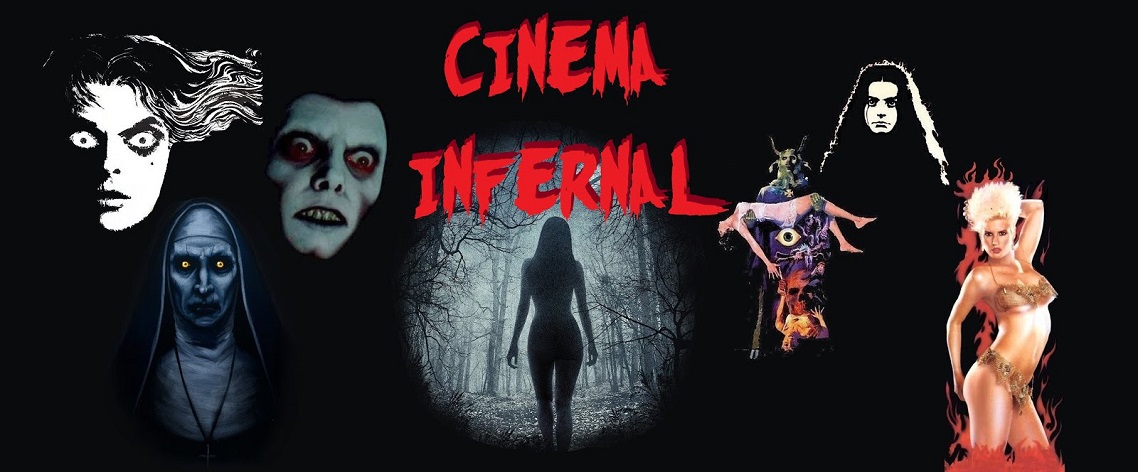México
Bárbaro
2014
Director- Lex Ortega, Isaac Ezban, Aaron Soto, Ulisses Guzman
,Jorge Michel Grau, Laurette Flores, Edgar Nito and Gigi Saul Guerrero
Cast- Guillermo Villegas, Marco Zapata, Harold Torres, Waldo
Facco, Florencia Ríos, Leslie Arce, Joyce Cuervo, Barbara Perrin Rivemar, Sara
Camacho, Dulce Alexa, Anuar Zuñiga Naime, Claudia Goytia, Patricia Ortiz, Alberto
Palavicini, Don Anastascio, Ramón Medína, Agustín Tapia, Diana Contreras, Nino
Reyes, Emiliano Hernandez
From Mexico
México Bárbaro
is an anthology of stories, set in Mexico, most of which have either a folk
horror or urban legend quality. Most movie anthologies consist of 3 ,possibly 4, stories with a “bookend” story as well. Not so with this film! You get a
whopping eight stories! They are, in order:
1)- Tzompantli-A vignette about the brutal
practices used by the cartel.
2)- Jaral de Berrios- Taking place in the Old West, two bandits try
to steal cursed gold.
3)- Drena ("Drain")- After smoking a joint that
she finds on a dead man, a girl is visited by a witch that gives her a bloody
task to perform.
4)- La cosa más preciada ("That Precious
Thing")- A girl that’s obsessed with losing her virginity has the perfect
weekend planned with her boyfriend. However, her plans are ruined by a visit from
a perverse creature.
5)- Lo que importa es lo de adentro ("What's
Important is Inside")- A little girl keeps trying to warn her mother that
the Boogey Man lives outside of her apartment but no one believes her.
6)- Muñecas ("Dolls")- A tourist attraction
doubles as a home for a serial killer.
7)- Siete veces siete ("Seven times Seven")- A
disfigured man engages in a long occult ritual to raise the dead.
8)- Día de los Muertos ("Day of the Dead")- The
girls at a strip club dress up for The Day of the Dead, but they have something
special planned for the customers.
Despite
it being geographically contiguous with the United States, Mexican horror doesn’t
have much in common with American horror. I’m not even sure it has much in common
with Spanish horror either. Mexican horror has evolved as its own entity.
All good
horror, regardless of where its from, plays on the anxieties of its audience. Before the introduction of Christianity, the
Aztecs practiced their very bloody religion which relied on pervasive human
sacrifice. The arrival of conquistadors may have spelled the end of the Aztec
civilization, but culture and religion die hard. Even when suppressed, their themes
and imagery find a way of expressing themselves.
Fast forward a few hundred
years and the violence of the Aztecs and the violence of the conquistadors has
been replaced with the violence of the drug cartels. All of this seeps into the
popular consciousness over the course of generations and manifests itself in
new and unique ways.
A good example of this is
the veneration of Santa Muerte, or Saint Death. She is a Mexican folk saint
and a kind of death goddess. She is a mixture of Aztec death worship and Catholic
imagery. She remained a rather obscure figure until the late 20th
century but has now found many admirers.
From the
beginning, one difference between Mexican horror and American horror is that
there were very few, if any, “rules”. I don’t mean rules about what you can
show or do. More like rules about what kind of story to tell. In the campy 1960s
this might mean a masked wrestler fighting a mummy who then fights a robot (check
out the Aztec Mummy trilogy). In the 70s it might mean turning out 2 of the greatest
nunsploitation movies that the genre has ever seen, Alucarda and Satanico Pandemonium. In the 21st century it means turning out Guillermo del
Toro, whose eclectic interests in subject matter reflects his Mexican cinematic heritage.
Now, you
won’t find anything as eclectic as masked wrestlers and robots in México
Bárbaro. But it does seem like the directors of the stories were given a free
hand to tell the stories how best they saw fit. The stories run the full gamut
in terms of style and tone. Some are classical Gothic story telling where as
some are gritty and modern. Some are tongue in cheek while some are brutally
violent.
Anthologies
are a unique kind of story telling. No story is long enough to develop character
and the success of the story relies on getting to the point quickly. México
Bárbaro presents several unique, effective stories connected by overarching
themes of death and the occult. It’s an enjoyable change of pace and worth the
time to track down.

.jpg)


.jpg)


.jpg)
.jpg)
.jpg)
.jpg)
.jpg)

.jpg)
.jpg)
.jpg)
.jpg)



.jpg)



.jpg)


.jpg)
.jpg)
.jpg)